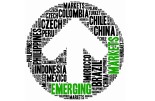DPAM: Global realignment favours emerging market debt
DPAM: Global realignment favours emerging market debt

Globally, yields on high-quality assets feel thin once adjusted for inflation and tax. Corporate balance sheets look sound, yet spreads are tight and carry is limited. Under such circumstances, emerging market debt offers a clear payoff profile.
By Michael Vander Elst, Head Emerging Markets Fixed Income, DPAM
We cover nine reasons why a measured allocation to this asset class can offer great diversification to investor portfolios, and what to keep in mind when assessing opportunities and managing the associated risks.
1) Attractive yields
Emerging market sovereigns pay a meaningful premium over developed market bonds. That yield pick-up rewards risk and offers a source of steady carry that compounds over time. Local currency bonds often add extra carry when real policy rates remain positive.
2) Currency appreciation potential
In local bond markets, exchange rates can be a second source of profit. If a currency is undervalued compared to its purchasing power, or if the country’s trade and financial flows are improving, the currency may rise in value and boost overall returns. Factors like better trade terms, credible inflation control, and central banks with strong reserves make this more likely and reduce volatility, attracting foreign investors. Investors can choose to invest with full currency exposure or hedge part of it to limit losses.
3) Economic recovery and growth
Many emerging economies are earlier in their economic cycle than the United States or the euro area. Their output gaps are narrowing, private credit growth is under control, and investment activity is picking up again. When economies grow steadily without overheating, debt sustainability improves. Higher nominal GDP increases the size of the economy relative to debt, while credible primary budget balances help to keep debt levels stable. Structural reforms that improve productivity, widen the tax base, or raise labour participation can help maintain these improvements. Markets often respond by reducing spreads and lowering term premia. Sovereign yield curves then tend to flatten from the long end, creating capital gains for investors.
4) Diversification benefits
Local emerging market bonds respond to different drivers than developed market duration or global equities. Domestic inflation paths, commodity exposures, and idiosyncratic policy cycles break the link. This can lower portfolio volatility when shocks hit one region or sector. The benefit is larger when allocations are diversified across regions and funding structures.
5) Improving credit profiles
Several governments have rebuilt financial buffers through fiscal rules, subsidy reforms, or better tax collection. Commodity exporters have used stronger trade conditions to reduce external deficits and increase reserves. Others have lengthened the maturity of their debt and broadened funding sources, such as green bonds and local retail schemes. Credit rating agencies tend to recognise these structural changes gradually. When the outlook shifts to positive, bond spreads often narrow before an official upgrade takes place.
6) Inflation trends
Inflation is easing in parts of the emerging markets, helped by tighter policies in 2022 and 2023 and the fading of supply shocks. As inflation expectations move closer to target and knock-on effects weaken, central banks have more scope to cut rates. This can boost the value of longerdated bonds. Local yield curves may rise in price as policy rates return to normal levels. Even after rate cuts, real yields often stay positive, which keeps domestic investors interested in bonds. Inflationlinked bonds add another option.
7) Geopolitical or policy shifts
Politics can add value when it supports market access and stability. Trade deals can boost medium-term growth and reduce reliance on external funding. Credible fiscal rules lower borrowing costs by making debt trends more predictable. Greater central bank independence reduces concerns about political interference. A small change in expected reform momentum can move long-dated spreads by dozens of basis points.
8) Relative valuation
In several segments, spreads versus developed market benchmarks remain above long-run averages after adjusting for default risk, recovery values, and liquidity. Local real yields in selected markets still trade at a premium to estimated neutral rates and to forward inflation. FX screens based on balance-ofpayments trends and unit labour costs flag value in places where current accounts are improving. A disciplined process that ranks countries by valuation, policy quality, and external resilience can raise hit rates.
9) Demand from global investors
Global investors, in search of higher yields and broader portfolio diversification, are increasingly turning to emerging market debt, which offers both attractive income and exposure to a wider range of economic drivers. The recent move into emerging markets highlights a search for alternatives, with institutional investors increasing their exposure to local currency markets. This growing interest boosts demand, which in turn supports prices, improves market liquidity, and can help reduce funding costs for issuers.

Active selection and quality in emerging market sovereigns
Emerging market debt offers yield, diversification, and a clear set of catalysts in policy and credit. The asset class has matured, the buyer base is broader, and the opportunity set is rich.
Our value proposition in this asset class is framed as a sustainable emerging market debt strategy in local currency focused on long-term progress. As a sustainable actor, we believe sustainability creates alpha.
With an active selection strategy for securities and countries, duration and positioning on the yield curve, we invest in bonds issued by emerging countries, selected on the basis of sustainable development criteria, excluding countries considered non-democratic.
Fundamental analysis is at the core. As active managers, we use macroeconomic, market and credit analysis to identify securities that offer attractive potential returns relative to the risk assumed. At ESG level, we integrate sustainability criteria such as the defence of fundamental rights, freedom of expression, education, the environment and healthcare.
|
SUMMARY Emerging markets are often at earlier stages of economic recovery or growth cycles compared to developed markets. Local sovereign emerging market bonds can provide diversification benefits. Some emerging markets are on an upward trajectory in terms of credit ratings. Positive geopolitical developments or policy shifts can create a favourable environment. Emerging markets may be undervalued relative to their fundamentals, offering an attractive entry point for long-term investors. Global strong demand for emerging market debt can support prices and liquidity. |
|
Disclaimer Degroof Petercam Asset Management SA/NV (DPAM) l rue Guimard 18, 1040 Brussels, Belgium l RPM/RPR Brussels l TVA BE 0886 223 276 l For professional investors only. Marketing material. Investing incurs risks. All rights remain with DPAM. Unauthorized storage, use or distribution is prohibited. Although this document and its content were prepared with due care and are based on sources and/or third-party data providers which DPAM deems reliable, they are provided without any warranty of any kind. All opinions and estimates reflect the situation at issuance and may change without notice. The provided information herein must be considered as having a general nature and does not, under any circumstances, intend to be tailored to your personal situation. Its content does not represent investment advice, nor does it constitute an offer or recommendation to buy, sell, subscribe to or execute any other transaction with financial instruments, or an independent investment research or other form of general recommendation. |










